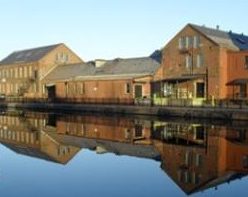- VIDEO to introduce you to the tour
- BOOKLET for the Saint Jerome Church (Campus and Neighborhood) walking tour
- Private GROUP TOUR (COSTS) is one hour long for this Saint Jerome Church (Campus and Neighborhood) walking tour. It is fully outdoors. Also a one hour indoor presentation can be given.
- A free public tour comes up every five years.
- A self-tour is available for anyone using the maps and text seen below. – LOCATION
- Churches of Holyoke
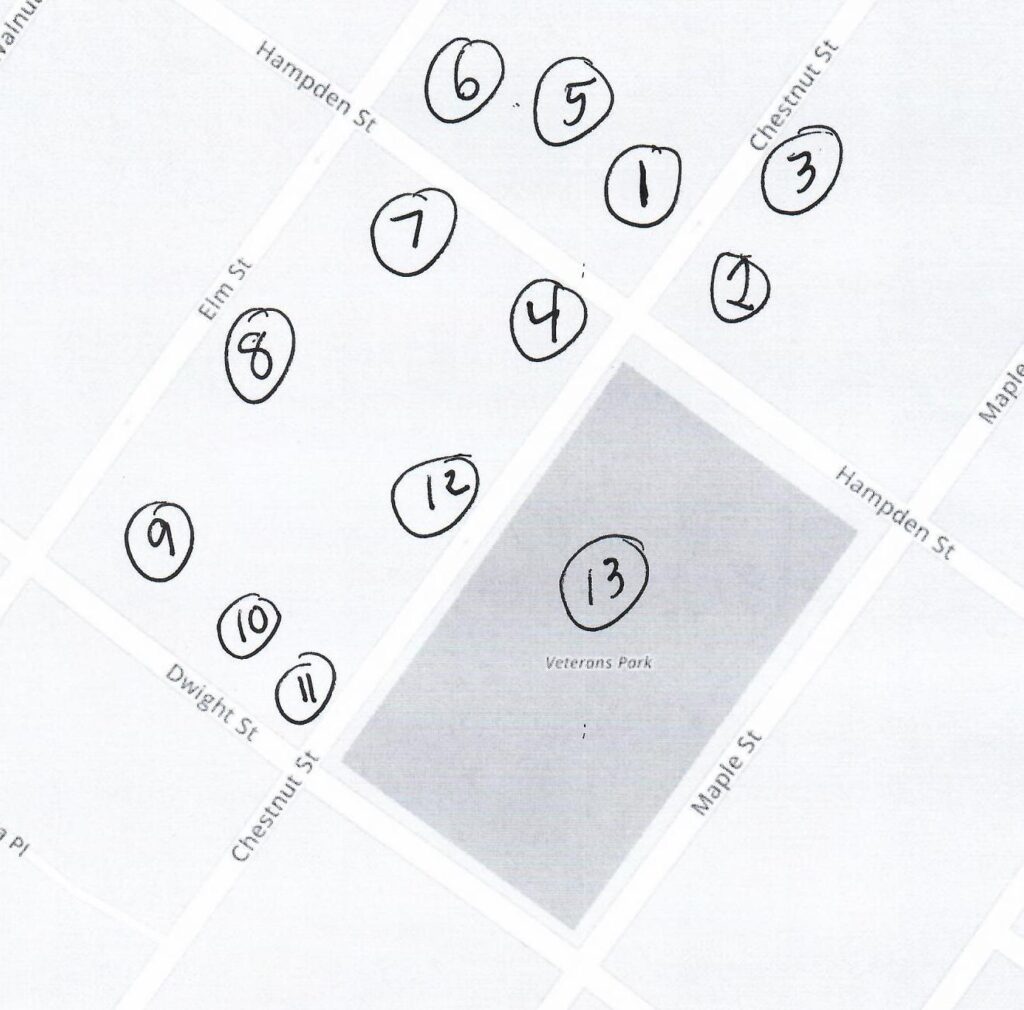
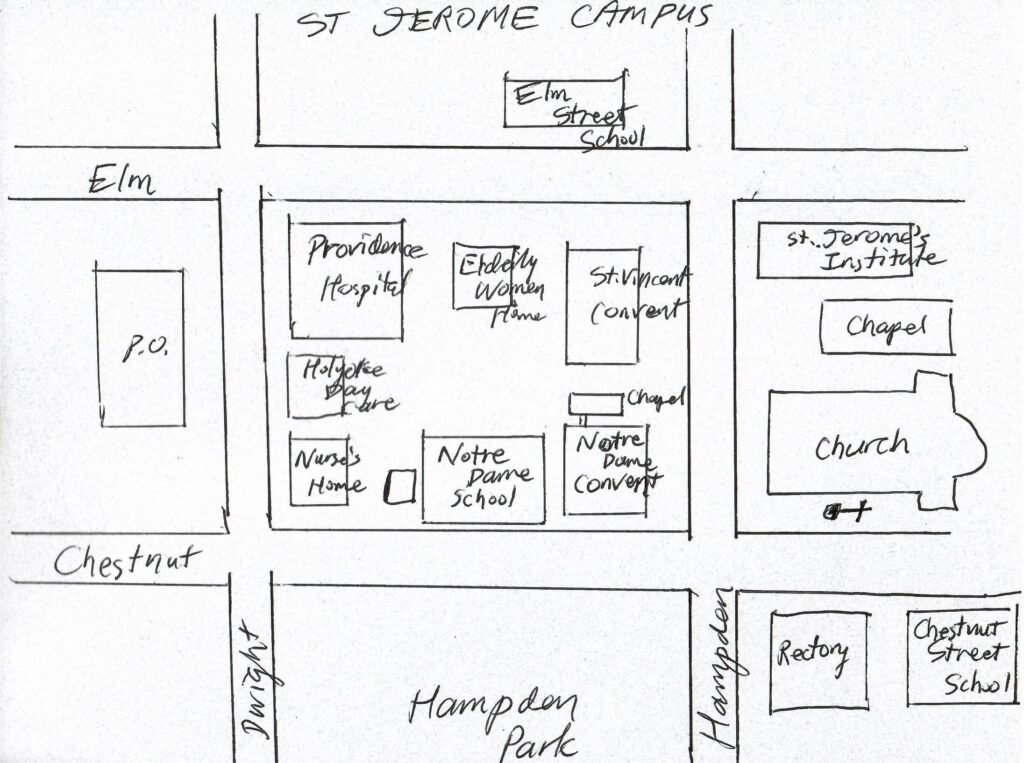

stop 1 – Saint Jerome Church
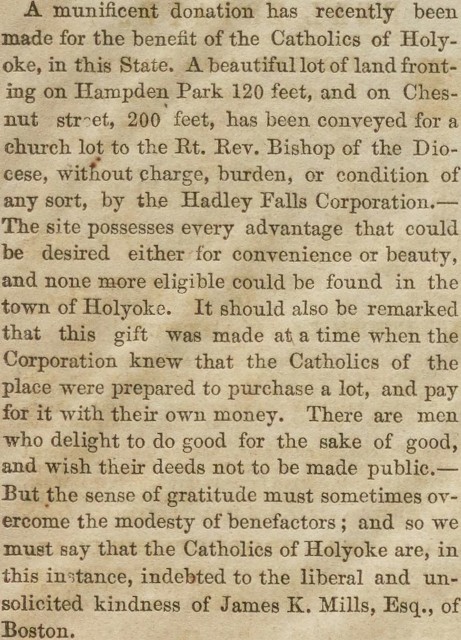
Saint Jerome Church started in 1856 as a parish. A parish is the congregation that meets together for worship. Some of the early masses were celebrated at the Exchange Hall and some outdoors. Before 1856 the Catholics went to St Matthews Church in Chicopee. At times the priest came to Holyoke and mass would be held in private homes, outdoors, and at the Dam House. The first church was finished in 1860. Jeremiah O’Callaghan was the first priest and when he died the next year he was buried alongside the east wall of the young church. He was the first priest buried alongside his church in Holyoke. Father Michael Howard was buried alongside Rosary Church and Father Andre Dufresne was buried alongside the Precious Blood Church. Father Sullivan served for 5 years and started Saint Jerome Cemetery. Then came the Builder – Father Patrick Joseph Harkins. He started many institutions and had built many structures.
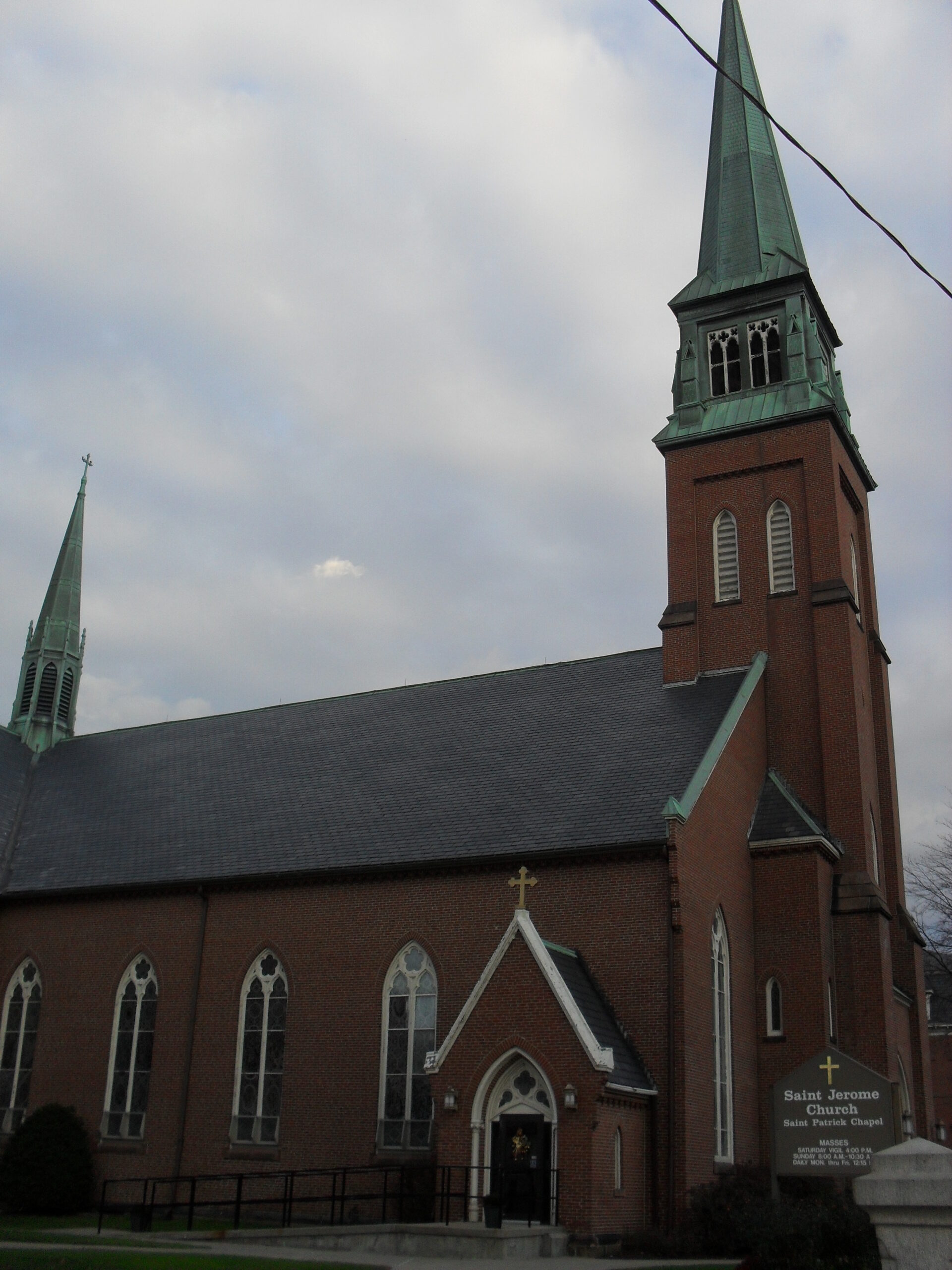
Saint Jerome Church was rebuilt in 1885 since the Irish population of Holyoke had expanded greatly. The front half was retained but the back half was widen and lengthened. This church was burnt in 1934 and rebuilt the next year. The plan was the same but new materials were used except for the bell. The only visible change was the removal of the clock faces in the steeple.
stop 2 – Saint Jerome Rectory
The Saint Jerome Rectory was finished in 1880. It is built in the Second Empire style. The first rectory of Saint Jerome’s was at a home on the northeast corner of Dwight and Elm Streets (108 Elm Street). Father Harkins did not like it there so he had the new rectory built.
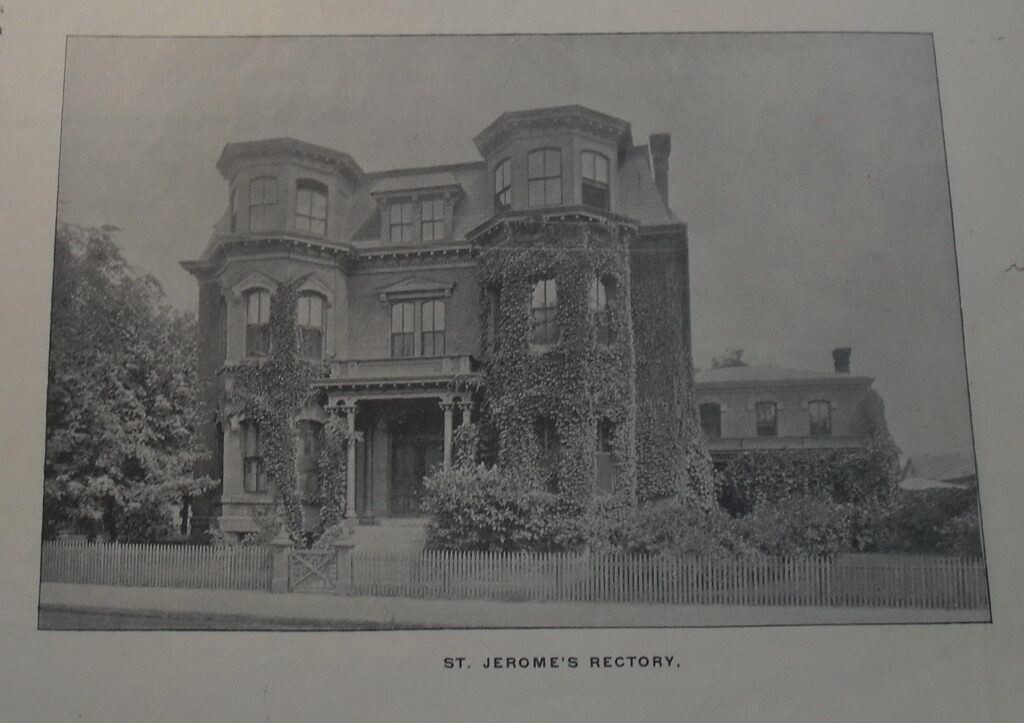
Priests who worked at the schools and the church lived there and so did the house staff. Grace and Catherine Harkins lived there as staff for many years.
| pastor | name | start | end | burial | |
| 1st | Jeremiah O’Callaghan | 1854 | 1861 | Saint Jerome Churchyard (Holyoke) | |
| 2nd | James Sullivan | 1862 | 1866 | Holyhood Cemetery (Brookline) | |
| 3rd | Patrick Harkins | 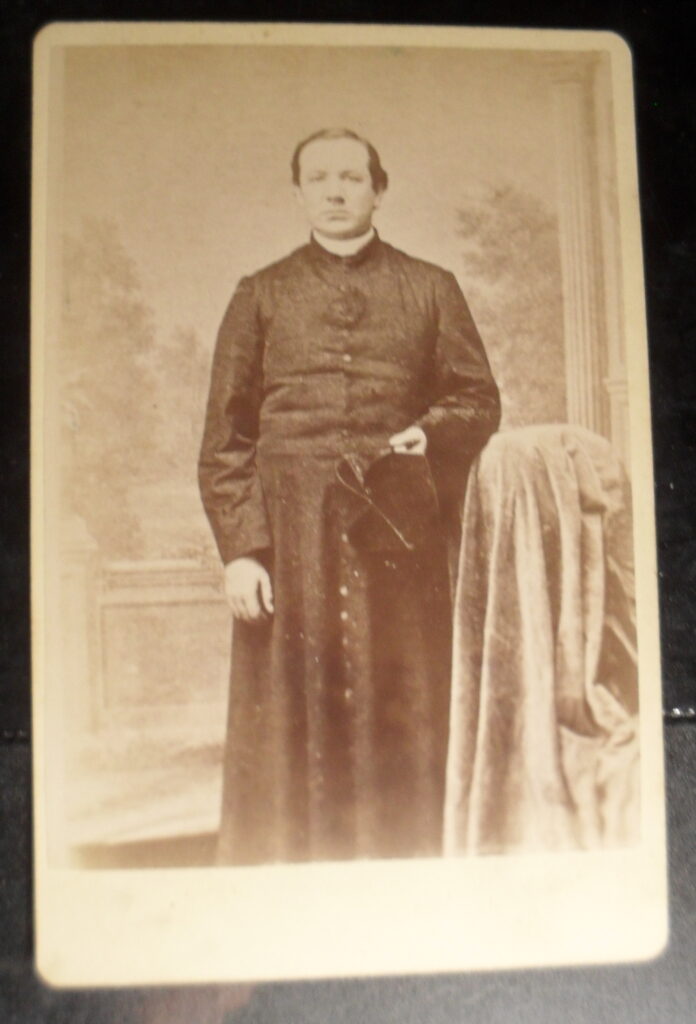 | 1866 | 1910 | Saint Jerome Cemetery (Holyoke) |
| 4th | James T Madden | Jan 1 1911 | 1922 | Saint Jerome Cemetery (Holyoke) | |
| 5th | John F Fagan | 1923 | 1942 | Saint Jerome Cemetery (Holyoke) | |
| 6th | Andrew Martin | 1944 | 1969 | Saint Jerome Cemetery (Holyoke) | |
| 7th | Maurice Martin | 1970 | 1975 | unknown | |
| 8th | Francis Xavier Boyle | 1975 | 1986 | Saint John’s Cemetery (Worcester) | |
| 9th | Daniel Foley | 1987 | 2005 | Saint Jerome Cemetery (Holyoke) | |
| 10th | Wiliam Lunney | 2006 | 2018 | ||
stop 3 – William Whiting School
William Whiting School was built in 1910 where the North Chestnut Street School stood. There was a playground along its side that functioned as a school and a city playground. Its name was Chestnut Street Playground and retained that name even after the 1910 new school was put in place.
To its north was the Emerald Fire Station which remained there until 1919. In 1977 Holyoke Catholic High School purchased the school and gradually turned it into their cafeteria and then their fourth building for classrooms.
Across the street from the school is the Quaker Meeting Home. It was only used as such for 10 years from 1856 to 1866.
stop 4 – Notre Dame Convent
The first school on the campus was the Notre Dame School. The teachers were the Notre Dame nuns and a convent was built for them that year of 1869 when the school opened. The convent remains the oldest structure on the Holyoke campus of St Jerome’s.
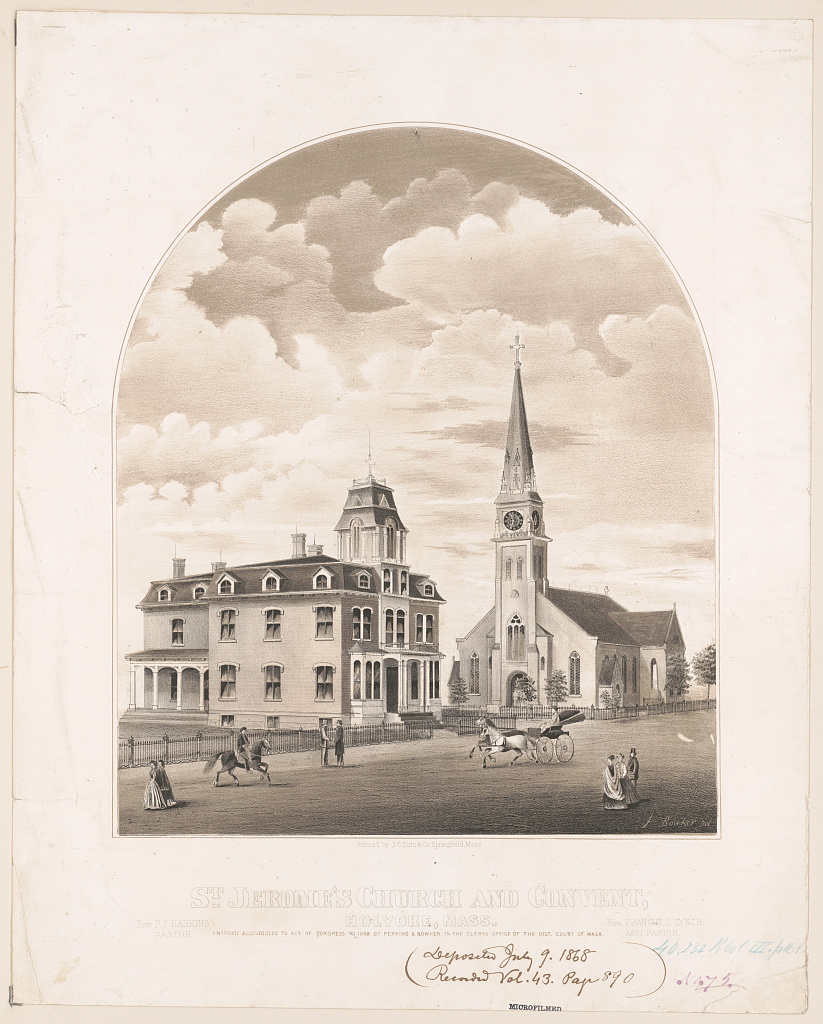
The school was a wooden home that was moved from Elm Street to Hampden Street. This was the second girls’ school in the old Springfield Diocese (Worcester, Hampden, Hampshire, Franklin, and Berkshire). The first girls’ school was at Holy Name of Jesus in Chicopee. A nun’s chapel was added in 1872 to the back of the convent. This wooden structure was replaced in 1883 with the brick school Immaculate Conception of the Notre Dame of Lourdes. The wooden school was moved to Worcester Place and lasted until 1980.
stop 5 – Saint Patrick’s Chapel
Saint Patrick’s Chapel was built in 1899 as an attachment to the Saint Jerome Church.

As mentioned at the last stop (4), the Notre Dame Convent has a chapel attached to its back named the Saint Joseph’s Chapel for Nuns. There once was an alleyway through the Saint Jerome block but the church chapel blocked that. There is a third chapel in the back of the church proper.
stop 6 – Saint Jerome’s Institute
Saint Jerome’s Institute opened in 1872 as the first boys’ school ever in the old Springfield Diocese. It was a three floor structure. In the beginning it served not only as a school but also as a chapel for the church.
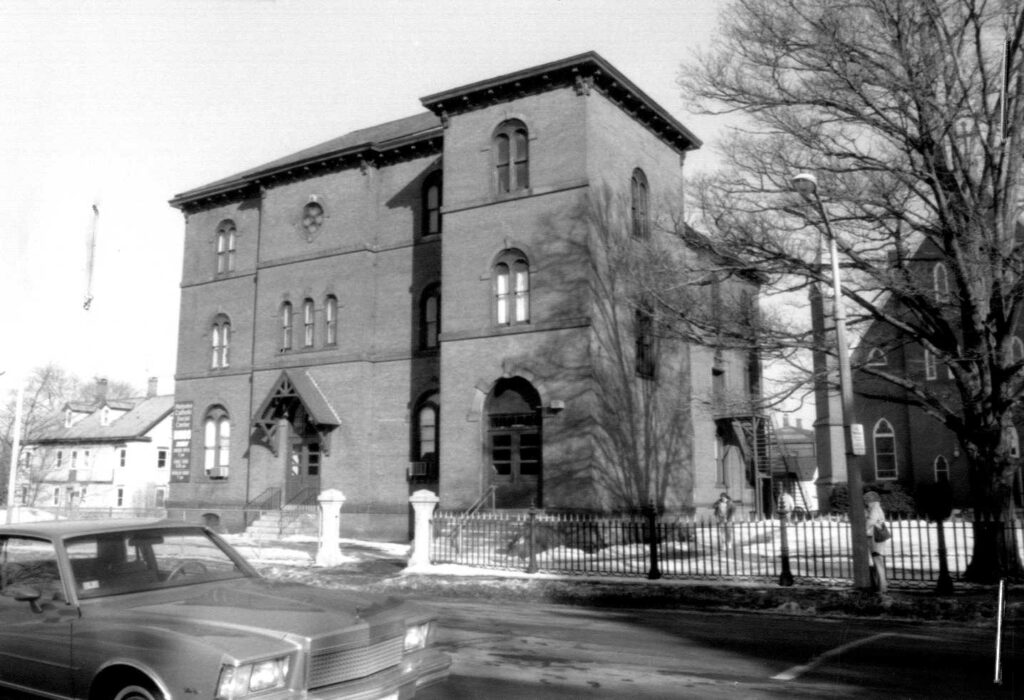
The Sisters of Providence were recruited in 1875 to teach there replacing Grace Harkins – sister of the pastor. They lived in nearby homes until 1890 when the Convent of Saint Vincent de Paul was built. The second and third floors were gutted and replaced with an auditorium (which doubled as a gym) in 1943. Depending upon which floor one was talking about it was called the Saint Jerome’s Institute or the Saint Jerome’s Gymnasium.
stop 7 – Convent of the Sister of Saint Joseph
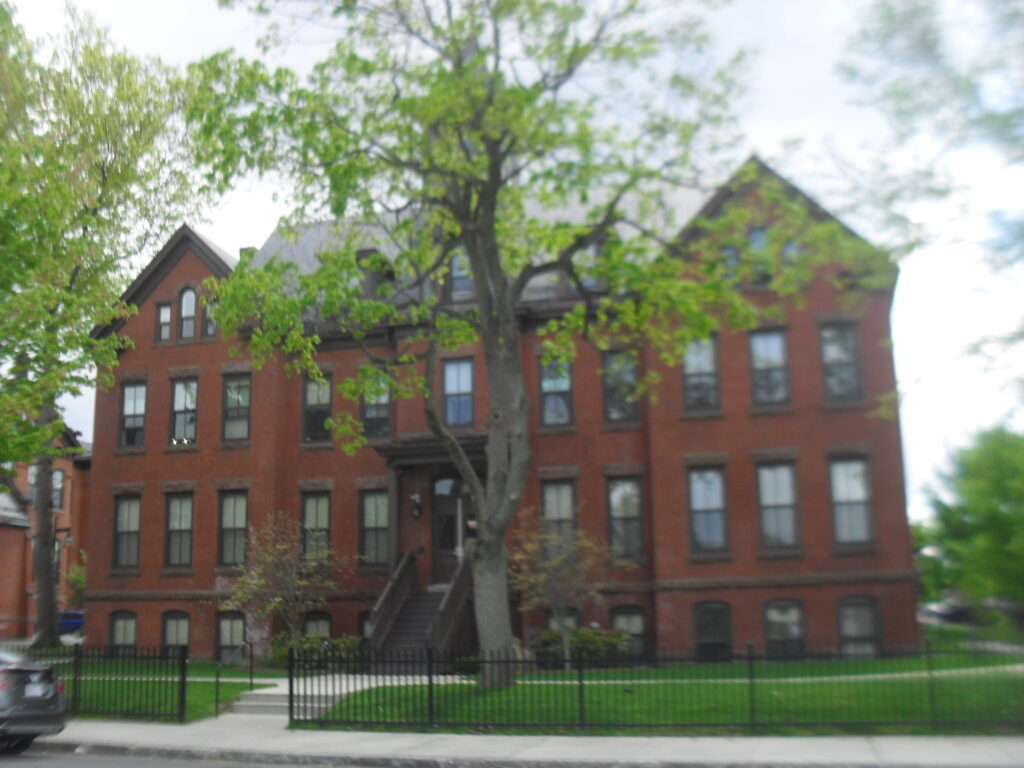
This convent was the second one built on this campus and they both still exist. It was first made for the Sisters of Providence in 1890 and then in 1912 housed the Sisters of St Joseph.
stop 8 – Father Harkins Home for Elderly Women
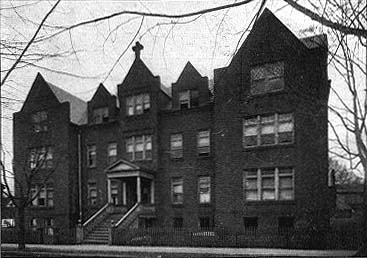
The Father Harkins Home for Elderly Women was at first in the former rectory. Then in 1898 a brick building was constructed along Elm Street for them. The Beavan Home for Men was start at Ingleside in 1893. (The men would get a new building there in 1907.) The Father Harkins Home for Elderly Women was built solely with money from the priest’s savings. From 1895 to 1898 the women stayed at the Mount St Vincent house until this home was readied.
Patrick Harkins and his entire family was involved in the growth of the St Jerome’s Parish. My thought is that his family was also contributing to the financial development of the parish.
| name | occupation | birth | death | |
| Daniel | father | 6 Feb 1883 | ||
| Rosana O’Doherty | mother | 3 Jan 1889 | ||
| Patrick | pastor | 1833 in Dunfanaghy | 4 Dec 1910 | |
| Catherine | housekeeper | 12 July 1895 | ||
| Daniel | dentist | 29 Apr 1896 | ||
| Grace | organist | 9 Feb 1912 | ||
| Bridget | 30 Nov 1874 | |||
| Cornelius | dental supply sales | 9 June 1903 | ||
stop 9 – House of Providence Charity Home
House of Providence Charity Home opened in South Hadley in 1873. It is still there located on Crescent Lane. It was the first Catholic hospital in Western Massachusetts ever. It was at first called the Asylum of the House of Providence and was staffed by the Sisters of Charity of Providence at the parish house of St Patrick’s Chapel. From 1875 to 1878 it was again a hospital – a contagion hospital.
The House of Providence Charity Home opened in Holyoke the next year – 679 Dwight Street (the Parsons House at the corner of Dwight and Elm). It was a wooden structure until 1893 when a three story brick structure was built directly in front of that home.
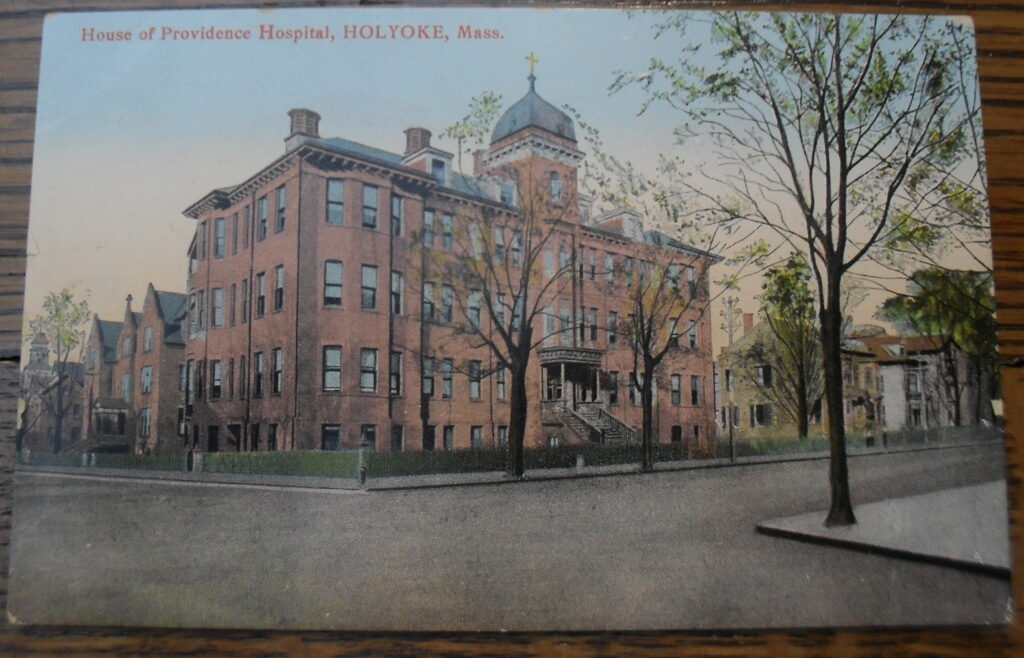
In 1940 a pharmacy and a laboratory were opened behind the hospital.
All was run by the Sisters of Providence. Superiors were:
| Sr Mary Agatha | 1896 | 1898 |
| Sr Mary Anthony | 1908 | |
| Sr Mary Visitation | 1917 | |
Read more about medicine in Holyoke.
At the corner across Elm Street is the former funeral home – John Shea Home.
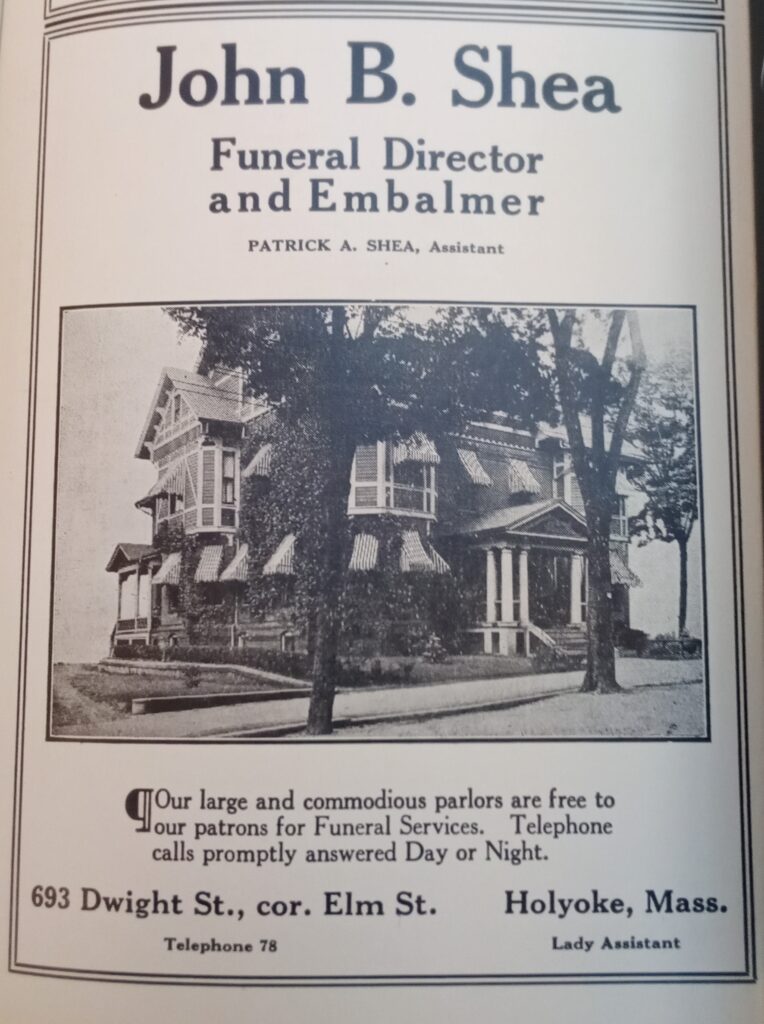
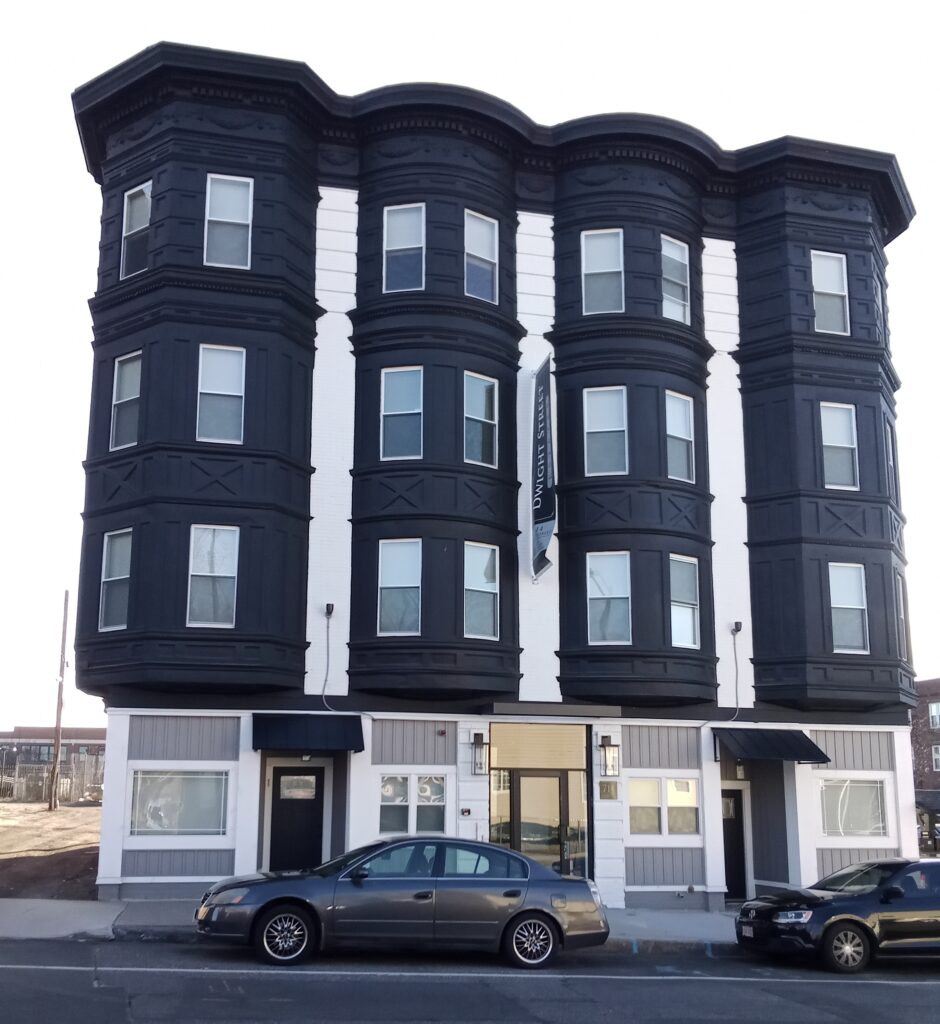
stop 10 – Providence School of Nursing
To the east of the hospital was a home. This home was bought by Harkins in 1872 for his family. At first his sister, and then later his brother and parents lived there. His brother Daniel had a dentist office in the home. In 1912 the last of his family died and by the next year it was turned into a nurse’s home. In 1916 a day care or nursery was started in the home. This was the 10th nursery in the entire state of Massachusetts. The nursery was started by the Saint Agnes Guild of Saint Jerome. By 1919 it moved to the James Newton home on Chestnut Street. LINK
In 1900 the Providence School of Nursing opens at the Joseph Skinner home at the corner of Elm and Essex. Skinner had moved to his summer home in South Hadley and donated his home to the hospital. They used it to train and house the nurses. The new Providence School of Nursing opened in 1938 at the same location and remained opened until 1971 (266 Elm Street). The Providence Hospital moved to Northampton Street in 1958 and the old one torn down.
stop 11 – Providence Maternity Home
The Charles Ranlet home at the corner of Chestnut and Dwight (121 Dwight Street) became the Nurses’ Home in 1913. Charles Ranlet was the president of the Hadley Falls National Bank. The house would soon become the Providence Maternity Home. Thus this entire southern edge of the block was devoted to medical needs.
Next along the block was a dentist’s home. It was between the Ranlet home and Holyoke Catholic. This was the home of Daniel Murlless. Murlless had his dentist office at the southwest corner of Maple and Essex which also functioned as a dental supply company. He had many patents including ones for a dental dam and a dental bridge.
stop 12 – Notre Dame School
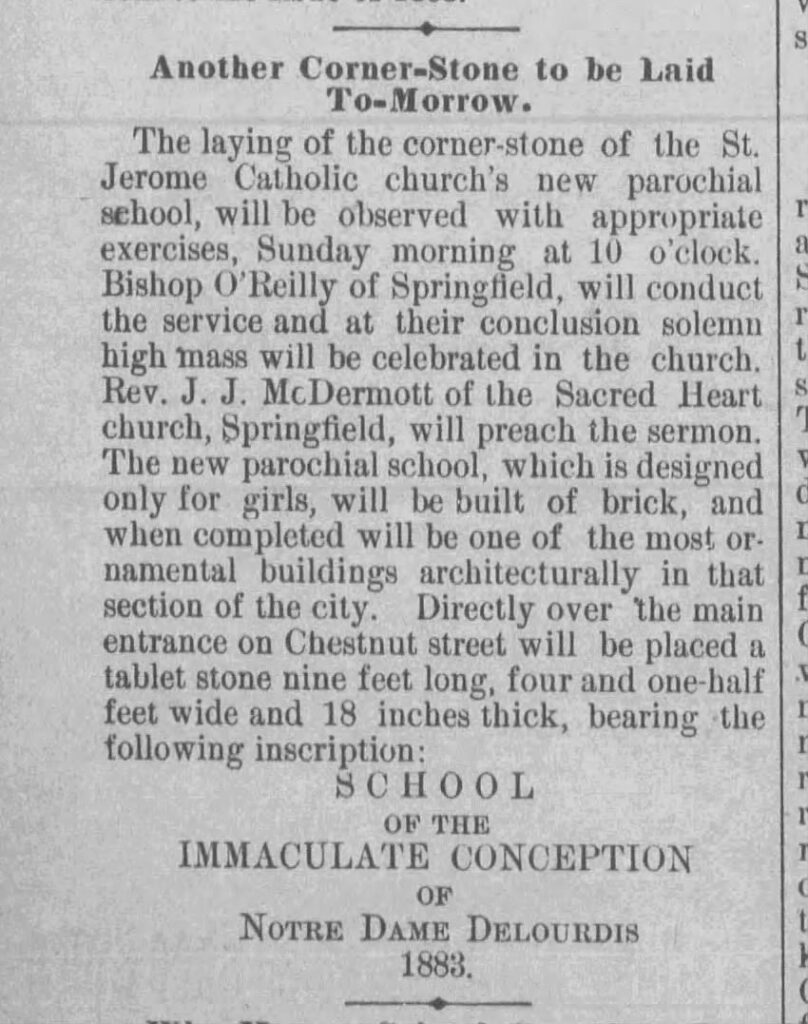
Lastly is the Notre Dame School. Built in 1883 as a girls’ school, it continued to expand for years. By 1895 some high school classes had been added. In 1910 the Saint Jerome High School opened within the building. There were no graduate until June of 1913. An important change at the school caused this. In 1912 the Sisters of Saint Joseph took over at all the Saint Jerome Schools. They were devoted to education unlike the other group of nuns. Thus they were better teachers and the students learned more. The main convent was also renamed and the second convent was turned into administrative offices and classrooms. Notice its formal name above the doorway: School of the Immaculate Conception of Notre Dame de Lourdes. This might be the longest name in Holyoke. In September of 1916 there was the first coed school on campus since the high school became a combined gender school. Finally, in 1923 the schools were all renamed Saint Jerome School and High School and all became coed.
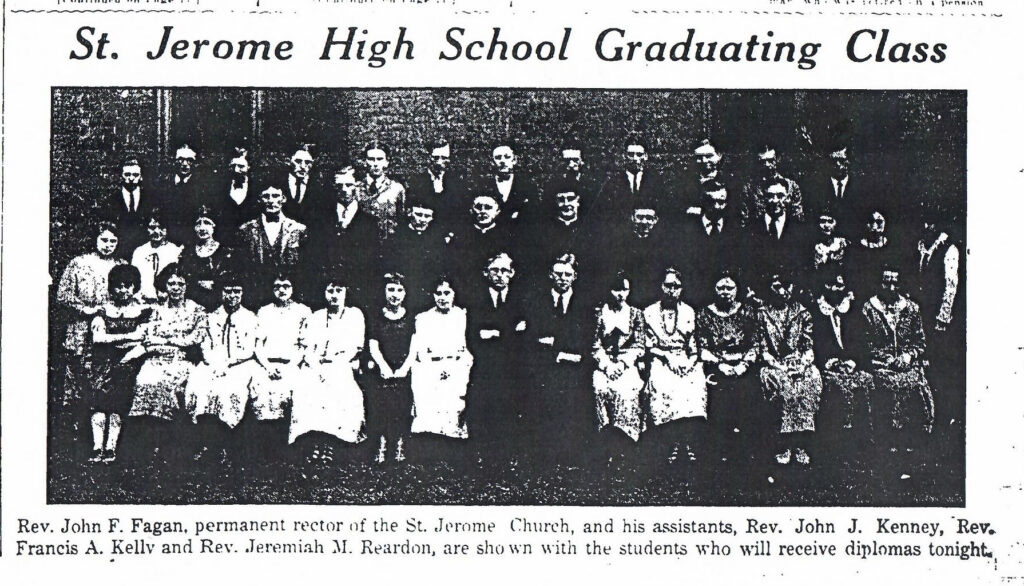
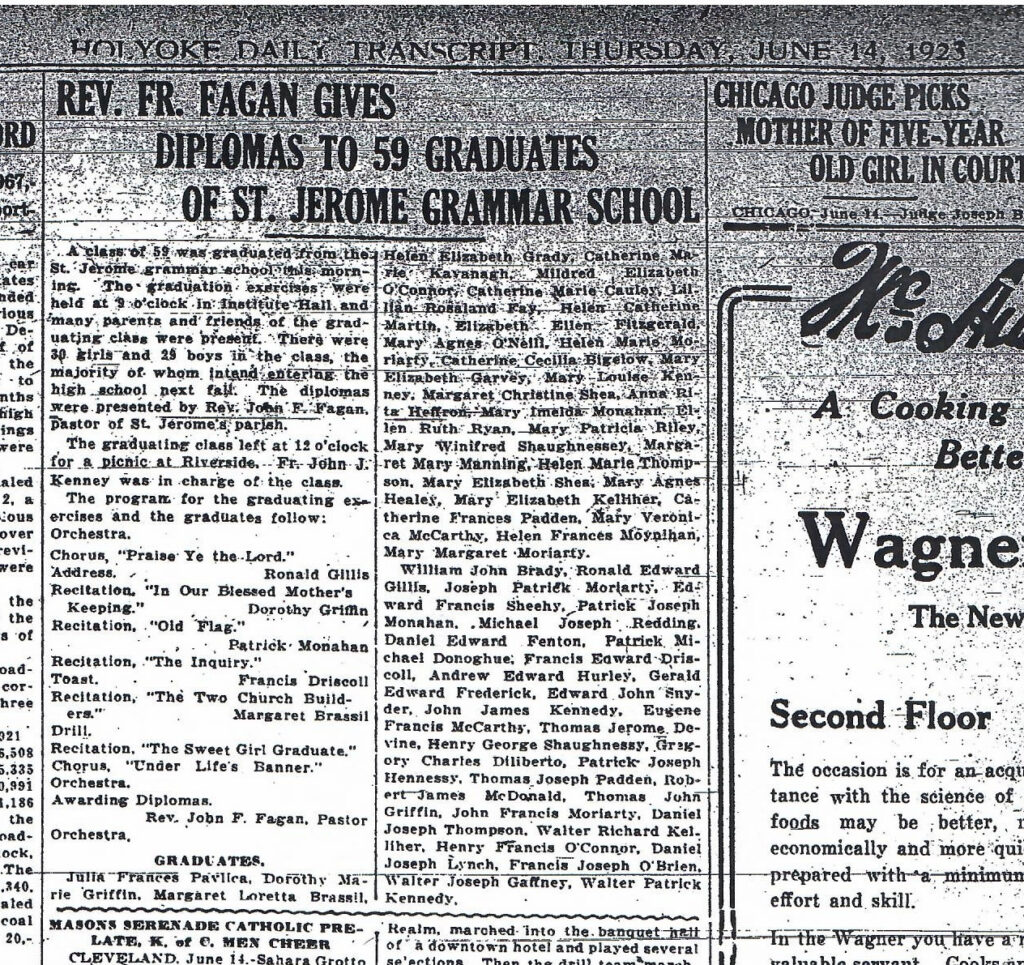
This Saint Jerome School would have sports teams and their nickname would be the Jerries.
In 1963 Holyoke Catholic High School would form from the union of three Catholic high schools around the city – the oldest Sacred Heart, the Rosary, and then St Jerome. They would meet in this building. St Jerome School was disbanded and students would go to Sacred Heart School. This merger into Holyoke Catholic High School was helped along by the 1947 merger of the three schools into one athletic team. Rosary High School was the oldest sports teams at 1910, Saint Jerome started its sports program in 1916, and Sacred Heart in 1920.
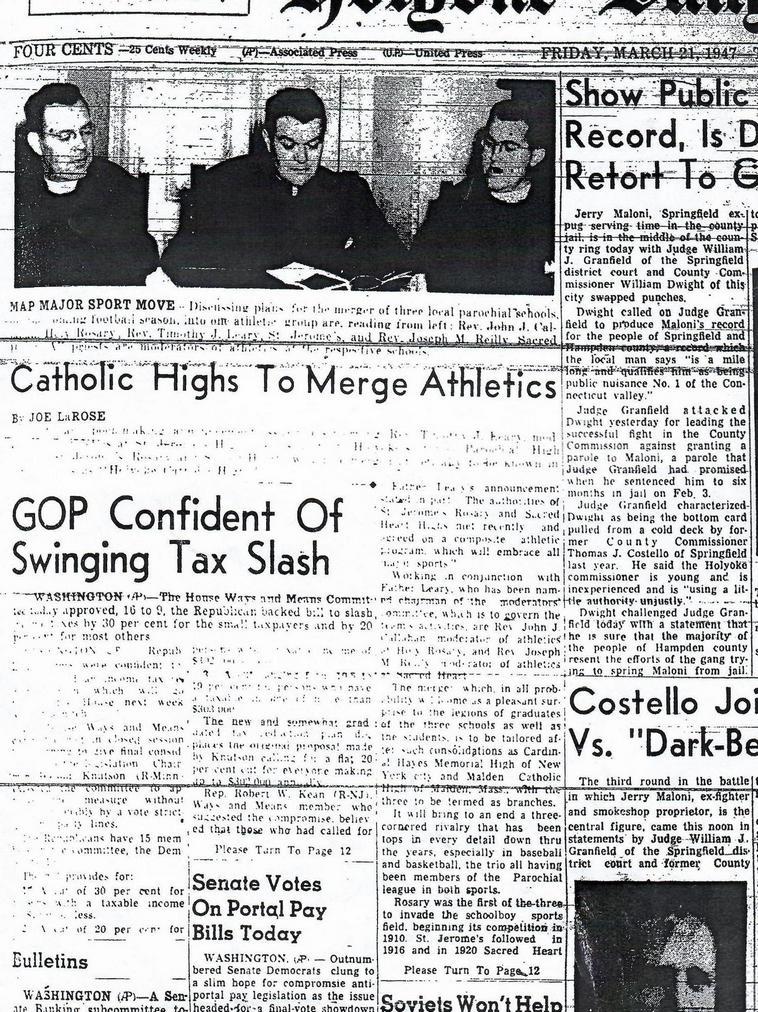
As an aside the school population of each high school in 1950 was Sacred Heart – 194, St Jerome – 187, and Rosary – 157.
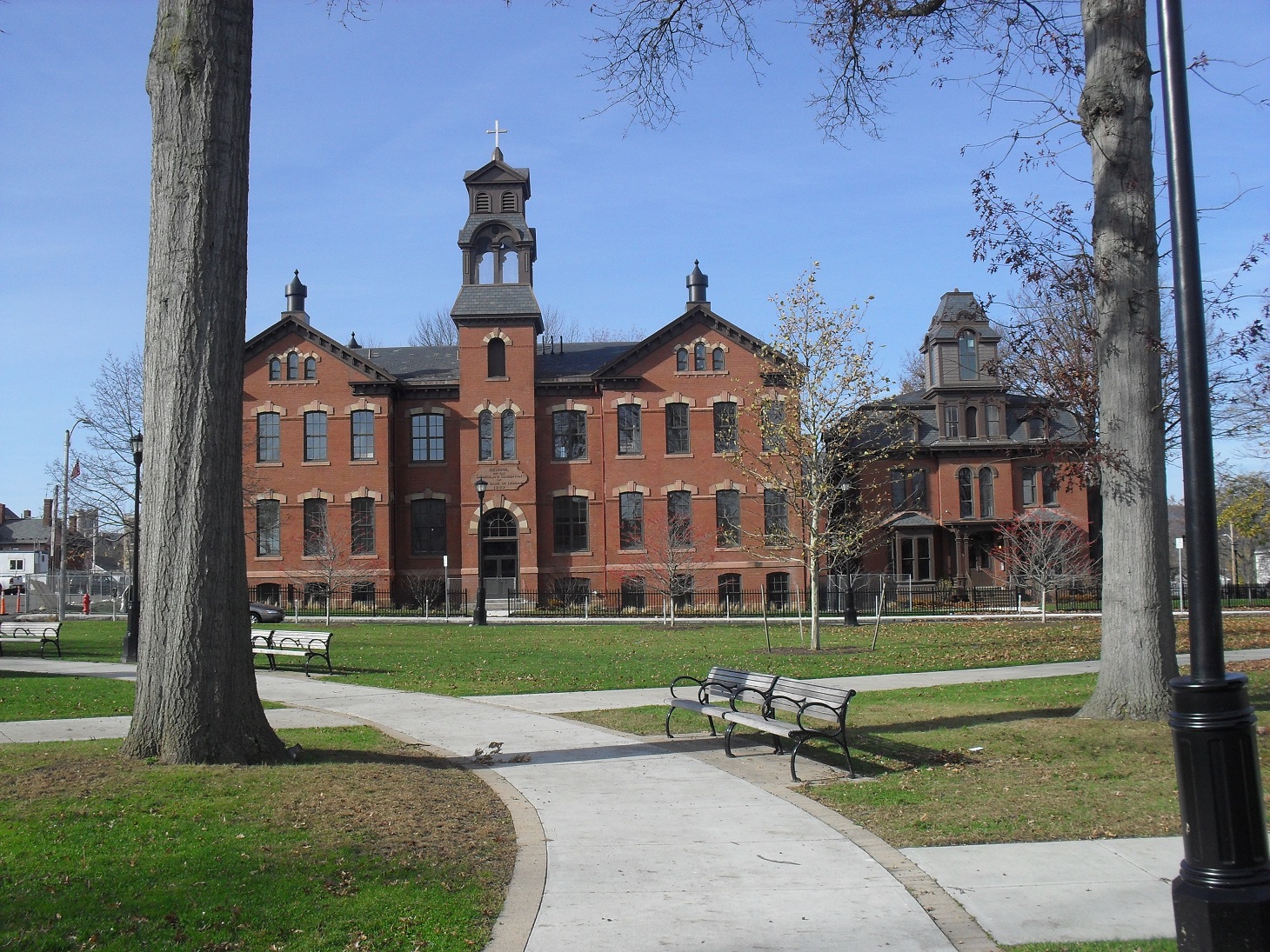
Saint Jerome Cemetery was expanded in 1904 from its original expanse along Saint Jerome Avenue to include all land to Northampton Street. Father Harkins, his parents, his brother Daniel, and his two sisters Grace and Catherine are buried in the same family plot. It is located along the only north-south crossing road.
Saint Jerome Temperance Hall was located along Maple Street. It was founded in 1868 and Father Harkins was made the spiritual head. The group is called Saint Jerome Total Abstinence Mutual, Benevolent, and Literary Society. The hall had a musical group, a library, and more.
Other churches were started in Holyoke with Saint Jerome as the mother church. Sacred Heart, St Patrick’s in South Hadley, and Holy Cross are all direct ancestors of St Jerome. Rosary, Saint Anne in Chicopee, Blessed Sacrament, and Holy Name are indirect. Some would start schools like St Jerome’s did but none would have the full program and great impact of St Jerome’s Church.
Brightside and Ingleside were offshoots of St Jerome. Read about them at the LINK.
St Jerome’s Church was the most complete parish in the old Springfield Diocese. There was no institution that could be formed that was not formed. Its parish priest Patrick Harkins and its strong congregation formed a church campus without rival in the area.
Stop 13 – Hampden Park Historic District
The totality of Veteran’s Park and the Saint Jerome Church Campus are now on the National Register of Historic Places under the name Hampden Park Historic District. For a complete discussion of this area click on the stop 13 underlined link above.
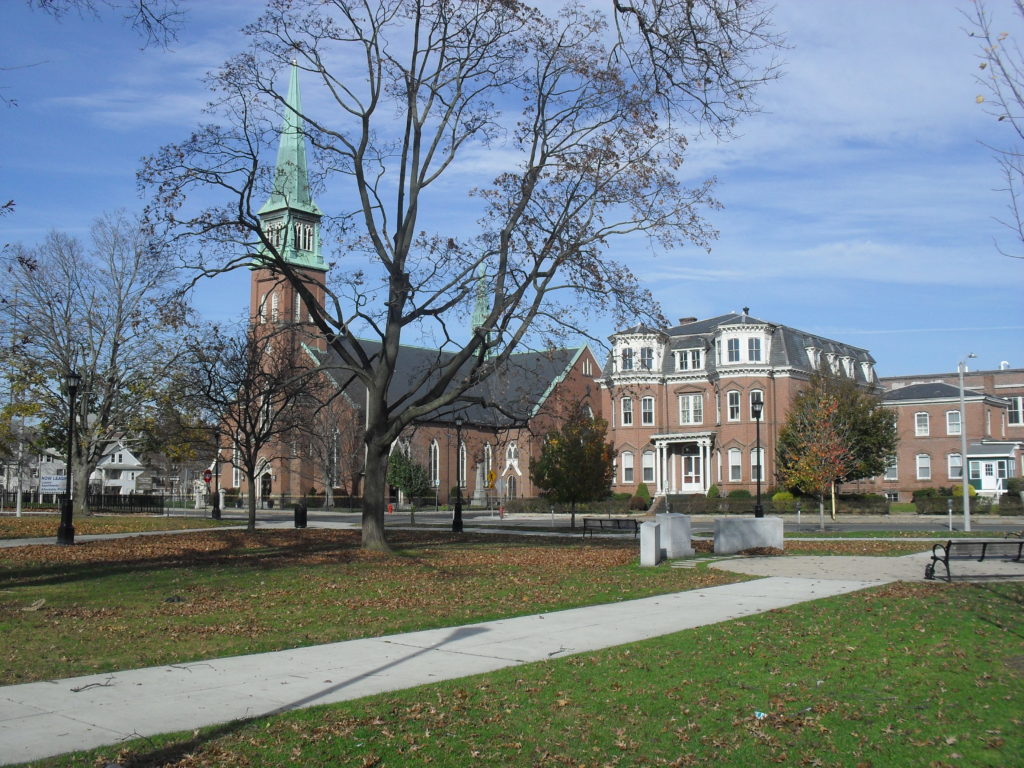
Sanborn map analysis of the campus
Sanborn 1884 map part a – part b – part c
Sanborn 1915 map part a – part b
Sanborn map analysis of the campus
